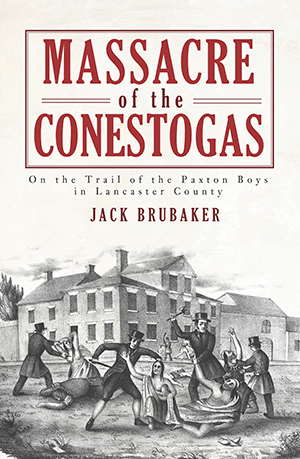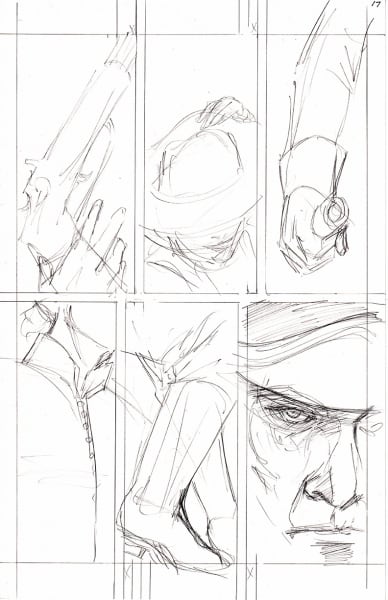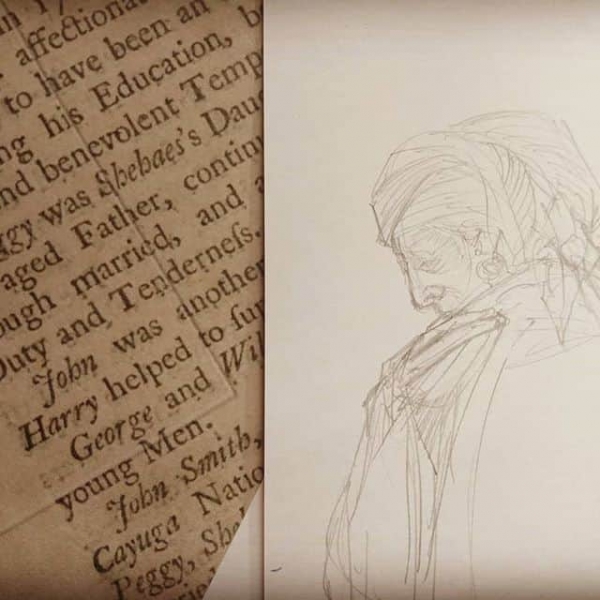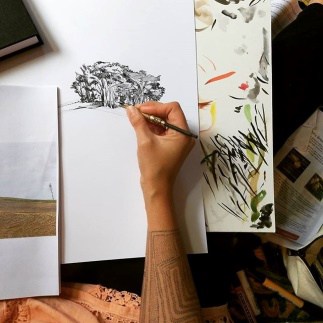Redrawing History: All the Graphic Details
Redrawing History: Indigenous Perspectives on Colonial America is a complex, multi-stage work that includes a summer institute for educators, co-organized with the Gilder Lehrman Institute of American History, a public exhibition to be hosted at the Library Company of Philadelphia, and a host of public programs unfolding between this fall and next spring. Going forward, you can expect monthly posts that highlight the progress we’re making on these various endeavors.
But let’s be honest: the Conestoga graphic novel sits at the center of our collaborative reinterpretation of the 1763 Paxton massacres. I’m pleased to report that in the several months since I last blogged, we’ve made substantial steps forward.
The Script
Among other developments, our book has a name. The graphic novel, to be published by Native Realities this October, will be entitled Ghost River: The Fall and Rise of the Conestoga. Alongside 60 pages of rich, color artwork, the volume will include 60 pages of historical, interpretative, and educational materials as well as an ambitious digital companion.
Dr. Lee Francis and I have revised the script through multiple drafts, drawing upon new primary and secondary source materials, including treaty minutes digitized by the Kislak Center at Penn Libraries, Marisa Fuente’s Dispossessed Lives (University of Pennsylvania Press, 2016), and John Bierhorst’s Mythology of the Lenape (University of Arizona Press, 1995).
I have also distributed recent versions of the script to our entire advisory board and benefited from the invaluable counsel of Curtis Zunigha (Lenape Center) and Dr. Daniel Richter (McNeil Center for Early American Studies, University of Pennsylvania). I’m especially grateful to two outside experts, Dr. Michael Goode (Utah Valley University) and Jack Brubaker, author of the Massacre of the Conestogas (Arcadia Publishing, 2010), for their generous feedback.
The Art
Watching Ghost River emerge through various stages of Weshoyot Alvitre’s art has been particularly inspiring—and educational. As much as I might know about scholarly production, creating a graphic novel falls well outside my bailiwick, and I count myself grateful—and fortunate—to have partnered with an author and artist who have collaborated on numerous projects.
The process began with thumbnails, which provided a general sense of the currents of the graphic novel. The thumbnails enabled Francis and Alvitre to work through what the Ghost River was going to look like at the highest level.
Shortly after providing those thumbnails, Alvitre shared her pencils, which as you might suspect, give a general sense of each of the 60 pages of the script. “I pencil loosely because I ink my own work,” Alvitre explained to me. “So in the pencil stages you’ll see the info translated from the thumbnails, rendered enough to give me info to ink, but less rendered than finished inks would be.” Similar to the thumbnails, the pencils are provisional, enabling Francis and me to request changes that Alvitre can test out quickly.
Of course, a novel needs characters. Alvitre has provided what’s called a character list, illustrating each and every figure that appears in Ghost River. As you can see from this penciled sketch, her depictions are much more detailed than those you find in earlier stages of the art.
At present, we’re entering the second half of the process—the inks. This is where Alvitre adds all of the detail that was otherwise missing from her pencils. Given that she’s working on 11″ x 17″ Bristol board, some of those details require an exceedingly careful hand.
You can expect many more inked pages, and, soon after, colored pages. Alvitre will be painting each page using a palette that evokes how they would have been traditionally painted. (She’s even researched eighteenth-century pigments!) I couldn’t be more excited about the colors, and I encourage you to follow her Instagram feed, to which she studiously posts recent work. Expect more updates in my next blog post next month.
Redrawing History: Indigenous Perspectives on Colonial America has been supported by The Pew Center for Arts & Heritage.








